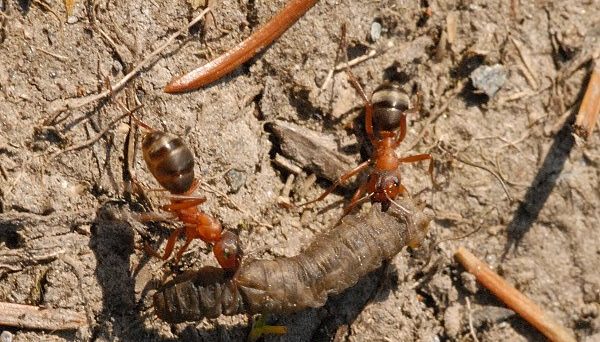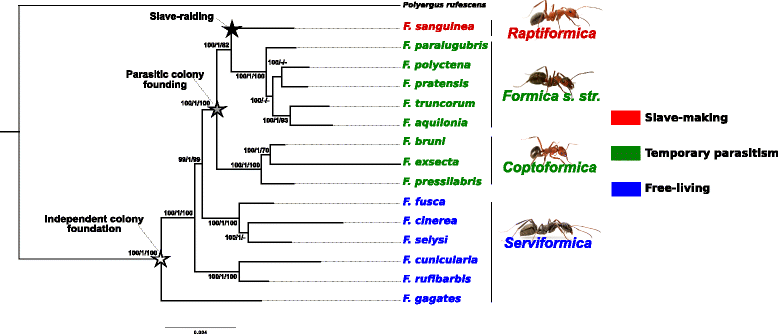
Nobody can deny the fascination arising from the complexity of the social architecture which defines the life of the anthill, and the slave-raiding behaviour of some species of Formica outstands as a spectacular case of social parasitism.
The evolutionary pathway towards slavery has been intriguing generations of natural scientists, and gave life to a discussion which finds its roots in Charles Darwin ‘On the Origin of Species’ itself.
The father of the theory of evolution suggested that slave-raiding in the genus Formica evolved progressively, through an intermediary step of so-called ‘temporary parasitism’. This hypothesis is sustained by several modern researchers, but other scientists propose an alternative explanation, suggesting that parasitic colony founding evolved several times independently.
To unravel the nodes of a 150-years old debate, Jonathan Romiguier, with a group of researchers from the University of Lausanne, Montpellier, British Columbia and Helsinki, took advantage of a modern phylogenomic approach to finally solve the intricate relationship among paleartic Formica subgenera.
Using a mixed experimental and bioinformatics methodology, Romiguier and his colleagues generated a phylogenetic tree to reconstruct the evolutionary steps of the four Formica subgenera differentiation. Following the clades of their phylogenetic tree, we can retrace the history of paleartic Formica, highlighting the key moments of the journey from freedom to slavery.

At the basal position of the tree, we find the free living Serviformica, the only group which is able to form colonies independently, indicating that Formica genus shares a free living ancestor with independent colony founding.
Following the tree, and therefore the evolution of Formica, we can find a single clade grouping the remaining subgenera, Coptoformica, Formica s. str. and the slave-making Raptiformica.
They all share some fundamental traits, such as the loss of the ability of independently found new colonies and temporary parasitic colony founding, suggesting that they can be considered quite close relatives, sharing a common ancestor that started to parasitize the Serviformica nests, and which passed on this capability to all of the three groups.
Coptoformica and Formica s. str., also known as ‘wood ants’, however, rely on mechanisms other than slavery to start new colonies. They normally perform ‘budding’, a process where new queens and workers leave to start a new colony nearby. This behaviour leads to the creation of super colonies of many inter-connected nests, and it is thought to be an adaptation to cold habitats, where the success of independent colony founding is limited by high queen mortality. In this context, intra-specific brood transport among nests is often observed.
Wood ants can use so-called ‘temporary parasitism’; in this case, new queens enter the nest of a Serviformica species, expelling and replacing the original queen, and use the host workers as helpers. With time, host workers are gradually replaced by the daughters of the temporary parasite queen.
More recently, Raptiformica developed the unique feature of active slave-making, alongside temporary parasitism. This is perpetrated as seasonal, inter-specific brood robbing from Serviformica nests to increase worker force. After emerging, Serviformica workers behave as if they were in their own colony.
In this context, the brood exchange typical of wood ants could have evolved toward selfish brood robbing during territorial battles, to ultimately become the inter-specific slave-raiding observed in Raptiformica.
Resolving the deepest nodes of Formica relationships led to the formulation of a theory that confirms Darwin first hypothesis.
The branching order of phylogeny suggests the evolutionary pathway towards slavery had a single origin, which then developed in several steps, where temporary parasitism can be seen as an intermediary step between free-living hosts and slave-maker parasites.
At the end of our evolutionary journey, we can look at the phylogenetic tree of Romiguier as a solid backbone in support of the classic model described in ‘On the Origin of the Species’, which adds a dowel to the global puzzle of evolution of slave-making in ants.
Comments